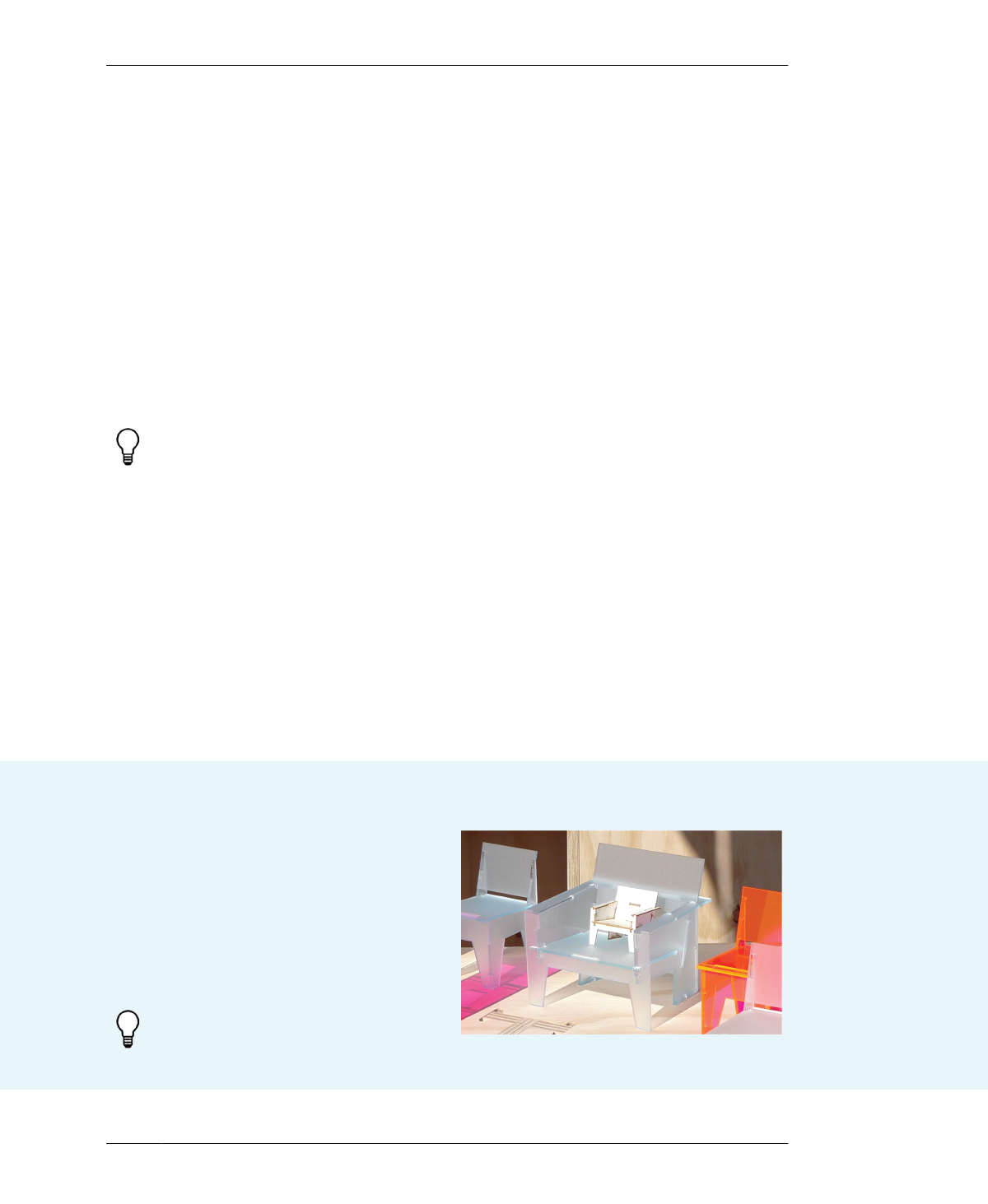
DESIGN DECISIONS: 2D AND 3D MODIFICATIONS
materiality relative to modifications, details,
and proportions. Refer to Appendix B on how to
select and source materials and fasteners, as
well as “Finishes for CNC Projects” on page
210, if you plan to finish your chair.
The Lounge Chair parts are laid onto two 4′×8′
sheets, in order to align grain direction on the
seat and seatback, and to orient the parts so
that the grain wraps around the front, back,
and sides of the chair. This layout leaves ample
surplus space on each sheet to cut test pieces
or the chair’s assembly jig (explained in “Using
the Jig” on page 248).
When you have extra material on a sheet,
sometimes it makes sense to cut parts for a
small project, like the Rotational Stools in
Chapter 7.
DESIGN DECISIONS: 2D AND 3D
MODIFICATIONS
For information on how to customize your
design in CAD, refer to “Design Decisions: 2D
and 3D Modifications” on page 225. As a three-
dimensional, volumetric furniture piece, the
90-Minute Lounge Chair is a complete project
on its own. As with the 5-30 Minute Chair, you
can further tailor the lounge to suit, by either
modifying the flat parts or transforming the 3D
model in the CAD file.
2D MODIFICATIONS
The Lounge Chair seat and seat back offer large
surface areas for cutting, etching, or pocketing
2D embellishments or patterns. Figure 11-1
shows a version of the Lounge Chair, custom-
ized for Makerbot Industries. A pattern of cir-
cles, drawn directly onto the 2D parts in the
CAD file, stretch across the seat and seat back.
Toolpathed and milled as pockets (see “Create
Pocket Toolpaths” on page 242), the circles
received colorful, 3D printed marquetry, made
by Makerbot’s Botfarm.
To make 2D modifications, simply open
AtFAB_LNG.skp and draw directly on the appro-
priate toolpathing layer. Refer to Chapter 3 for
preparing the modified CAD file for toolpathing
in your CAM program. Save the file.
MAKE A SCALE PROTOTYPE
Since the 90-Minute Lounge Chair is three-dimensionally
complex, a prototype helps you see the overall composi-
tion of added patterns and details in ways that you may
have not visualized on the CAD screen. It also gives you a
chance to empirically evaluate the structural integrity of
more substantial modifications, like elongating the seat.
Refer to “Scale Prototypes” on page 137 on preparing
scale prototypes.
Since it’s nearly impossible to laser-cut pock-
ets to a specific depth, skip cutting the keys.
FIGURE 11-2
Laser-cut Lounge pro-
totype
11/90-MINUTE LOUNGE CHAIR
237
